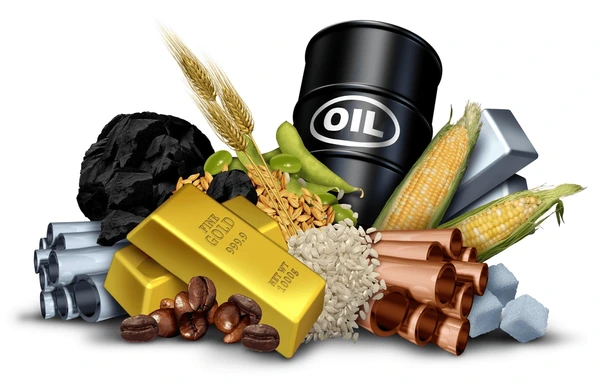Fossil trade in Oman - Exporting fossil to Oman
- Anbar Asia
- Trade with Oman
- Oman's Gemstones market
- Fossil trade in Oman
- Oman
 سوزن دوزی با پشم و نخ طبیعیCarpet
سوزن دوزی با پشم و نخ طبیعیCarpet - Oman
 نيزكMeteorite
نيزكMeteorite - Oman
 حجر الياقوتRuby
حجر الياقوتRuby - Oman
 نيازك واحجار كريمهMeteorite
نيازك واحجار كريمهMeteorite - Oman
 احجار عقيقAgate
احجار عقيقAgate - Oman
 حجرMeteorite
حجرMeteorite - Oman
 صخور ومعادن للبيعCoal
صخور ومعادن للبيعCoal - Oman
 حجر نيزكMeteorite
حجر نيزكMeteorite - Oman
 لولو طبيعيPearl
لولو طبيعيPearl - Oman

 حجر زمرد روسي طبيعي مع شهادة المختبر natural russian emerald with lab certiTurquoise, Ruby, Agate, Topaz, Emerald, Jade, Spinel, Meteorite
حجر زمرد روسي طبيعي مع شهادة المختبر natural russian emerald with lab certiTurquoise, Ruby, Agate, Topaz, Emerald, Jade, Spinel, Meteorite - Oman
 الحجاز كريمهAgate
الحجاز كريمهAgate - Oman
 احجار كريمه ومعادن وصخورCassitrite, Coal, Ruby, Agate, Lapis Lazuli, Jade, Tanzanite
احجار كريمه ومعادن وصخورCassitrite, Coal, Ruby, Agate, Lapis Lazuli, Jade, Tanzanite - Oman
 سنگ قیمتیTurquoise, Agate, Lapis Lazuli, Jade, Chrysocolla, Meteorite
سنگ قیمتیTurquoise, Agate, Lapis Lazuli, Jade, Chrysocolla, Meteorite - Oman
 حجر نيزكMeteorite
حجر نيزكMeteorite - Oman
 نيزك قمريMeteorite
نيزك قمريMeteorite - Oman
 احجار خامMeteorite
احجار خامMeteorite - Oman
 احجاركريمة
احجاركريمة - Oman
 احجار نيزكMeteorite
احجار نيزكMeteorite - Oman
 احجار كريمةTurquoise, Ruby, Agate, Diamond, Amber, Topaz, Emerald, Jade, Pearl, Meteorite, Tanzanite
احجار كريمةTurquoise, Ruby, Agate, Diamond, Amber, Topaz, Emerald, Jade, Pearl, Meteorite, Tanzanite  أنس3 months agoOman
أنس3 months agoOman نيزكMeteorite
نيزكMeteorite- Oman
 مصالح ساختمانی ، مواد غذایی ، مواد معدنی و پتروشیمی ،
مصالح ساختمانی ، مواد غذایی ، مواد معدنی و پتروشیمی ، - Oman
 GemstonesTurquoise, Ruby, Agate, Diamond, Lapis Lazuli, Amber, Topaz, Emerald, Jade, Charoite, Spinel, Chrysocolla, Pearl, Meteorite, Tanzanite
GemstonesTurquoise, Ruby, Agate, Diamond, Lapis Lazuli, Amber, Topaz, Emerald, Jade, Charoite, Spinel, Chrysocolla, Pearl, Meteorite, Tanzanite - Oman
 JadeiteJade
JadeiteJade - Oman
 Bracelets, Rings, Pendants and all jewellery availableTurquoise, Ruby, Agate, Lapis Lazuli, Amber, Topaz, Emerald, Jade, Spinel, Pearl, Tanzanite
Bracelets, Rings, Pendants and all jewellery availableTurquoise, Ruby, Agate, Lapis Lazuli, Amber, Topaz, Emerald, Jade, Spinel, Pearl, Tanzanite - Oman
 محمد
محمد



 melika tToday
melika tToday سوزن دوزی با پشم و نخ طبیعیCarpet
سوزن دوزی با پشم و نخ طبیعیCarpet Zakariya4 days ago
Zakariya4 days ago نيزكMeteorite
نيزكMeteorite منذر2 months ago
منذر2 months ago حجر الياقوتRuby
حجر الياقوتRuby مؤمن ابراهيم2 months ago
مؤمن ابراهيم2 months ago نيازك واحجار كريمهMeteorite
نيازك واحجار كريمهMeteorite عبدالعزيز العلوي3 months ago
عبدالعزيز العلوي3 months ago احجار عقيقAgate
احجار عقيقAgate عبدالعزيز البرامي3 months ago
عبدالعزيز البرامي3 months ago حجرMeteorite
حجرMeteorite أبو حاتم الرواحي3 months ago
أبو حاتم الرواحي3 months ago صخور ومعادن للبيعCoal
صخور ومعادن للبيعCoal FAWAZ AHMED5 months ago
FAWAZ AHMED5 months ago حجر نيزكMeteorite
حجر نيزكMeteorite ناصر المعمري5 months ago
ناصر المعمري5 months ago لولو طبيعيPearl
لولو طبيعيPearl أبو ليان للأحجار الكريمة الطبيعية6 months ago
أبو ليان للأحجار الكريمة الطبيعية6 months ago
 حجر زمرد روسي طبيعي مع شهادة المختبر natural russian emerald with lab certiTurquoise, Ruby, Agate, Topaz, Emerald, Jade, Spinel, Meteorite
حجر زمرد روسي طبيعي مع شهادة المختبر natural russian emerald with lab certiTurquoise, Ruby, Agate, Topaz, Emerald, Jade, Spinel, Meteorite الأحجار الكريمه7 months ago
الأحجار الكريمه7 months ago الحجاز كريمهAgate
الحجاز كريمهAgate Abo nwaf7 months ago
Abo nwaf7 months ago احجار كريمه ومعادن وصخورCassitrite, Coal, Ruby, Agate, Lapis Lazuli, Jade, Tanzanite
احجار كريمه ومعادن وصخورCassitrite, Coal, Ruby, Agate, Lapis Lazuli, Jade, Tanzanite sahar7 months ago
sahar7 months ago سنگ قیمتیTurquoise, Agate, Lapis Lazuli, Jade, Chrysocolla, Meteorite
سنگ قیمتیTurquoise, Agate, Lapis Lazuli, Jade, Chrysocolla, Meteorite سعيد العمري8 months ago
سعيد العمري8 months ago حجر نيزكMeteorite
حجر نيزكMeteorite Ibrahim8 months ago
Ibrahim8 months ago نيزك قمريMeteorite
نيزك قمريMeteorite حسام8 months ago
حسام8 months ago احجار خامMeteorite
احجار خامMeteorite حجرياقوت واحجارنيزك ابوعلي12 months ago
حجرياقوت واحجارنيزك ابوعلي12 months ago احجاركريمة
احجاركريمة سالم1 months ago
سالم1 months ago احجار نيزكMeteorite
احجار نيزكMeteorite احجار كريمة مسقطية3 months ago
احجار كريمة مسقطية3 months ago احجار كريمةTurquoise, Ruby, Agate, Diamond, Amber, Topaz, Emerald, Jade, Pearl, Meteorite, Tanzanite
احجار كريمةTurquoise, Ruby, Agate, Diamond, Amber, Topaz, Emerald, Jade, Pearl, Meteorite, Tanzanite أنس3 months ago
أنس3 months ago نيزكMeteorite
نيزكMeteorite Farbod trading and investment16 months ago
Farbod trading and investment16 months ago مصالح ساختمانی ، مواد غذایی ، مواد معدنی و پتروشیمی ،
مصالح ساختمانی ، مواد غذایی ، مواد معدنی و پتروشیمی ، oman18 months ago
oman18 months ago GemstonesTurquoise, Ruby, Agate, Diamond, Lapis Lazuli, Amber, Topaz, Emerald, Jade, Charoite, Spinel, Chrysocolla, Pearl, Meteorite, Tanzanite
GemstonesTurquoise, Ruby, Agate, Diamond, Lapis Lazuli, Amber, Topaz, Emerald, Jade, Charoite, Spinel, Chrysocolla, Pearl, Meteorite, Tanzanite Said sheikhdon Ali19 months ago
Said sheikhdon Ali19 months ago JadeiteJade
JadeiteJade Sayed Qamar Abbas20 months ago
Sayed Qamar Abbas20 months ago Bracelets, Rings, Pendants and all jewellery availableTurquoise, Ruby, Agate, Lapis Lazuli, Amber, Topaz, Emerald, Jade, Spinel, Pearl, Tanzanite
Bracelets, Rings, Pendants and all jewellery availableTurquoise, Ruby, Agate, Lapis Lazuli, Amber, Topaz, Emerald, Jade, Spinel, Pearl, Tanzanite محمد20 months ago
محمد20 months ago محمد
محمد


















